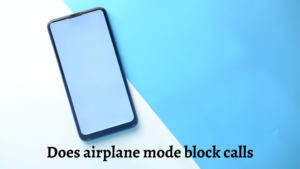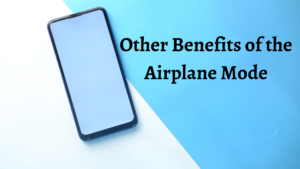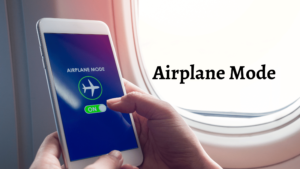
When a person calls you while your phone is in Airplane mode, the call will go straight to voicemail (assuming you have voicemail service set up on your phone). The caller will hear the normal ringtones, but the call will not connect until you turn off Airplane mode and the phone re-establishes a connection to the cellular network.
What Happens When Someone Texts You While in Airplane Mode?
When someone texts you while your phone is in Airplane mode, the message will not be delivered to your phone until you turn off Airplane mode and the phone re-establishes a connection to the cellular network or Wi-Fi. The sender will see the message as sent, but it will not be delivered to you until your phone is able to receive it. If your phone is connected to Wi-Fi, iMessage or other instant messaging app will be delivered.
If the sender is using an iPhone and you have iMessage enabled on your phone, the message will be sent as an iMessage (blue bubble) instead of an SMS (green bubble). iMessages are sent over the internet instead of the cellular network, so they will not be affected by Airplane mode. However, If the sender is not using an iPhone or iMessage is not enabled on your phone, the message will be sent as an SMS. SMS messages are sent over the cellular network and will not be delivered until you turn off Airplane mode.
When your phone is in Airplane mode, it will not receive calls or texts until you turn off the mode and re-establish a connection to the cellular network or Wi-Fi. However, if your phone is connected to Wi-Fi, iMessage or another instant messaging app will be delivered.
What Are Other Cases Where You Won’t Receive Incoming Calls?
There are several other cases where you may not receive incoming calls:
- No signal or poor signal: If your phone is not in an area with strong cellular coverage, it may not be able to receive calls.
- Call Forwarding: If you have call forwarding enabled on your phone, incoming calls will be forwarded to another number instead of ringing on your phone.
- Do Not Disturb: If you have enabled the “Do Not Disturb” feature on your phone, incoming calls will be silenced and will not ring or vibrate.
- Blocked numbers: Does airplane mode block calls? If you have blocked a number from calling or texting you, calls from that number will not reach your phone.
- Phone turned off or battery dead: If your phone is turned off or the battery is dead, it will not be able to receive calls.
- Roaming: If you are in an area with a different cellular network than the one you are subscribed to, your phone may not be able to receive calls until you switch to the right network.
- Airplane Mode: If your phone is in Airplane mode, it will not be able to receive calls or texts until you turn off the mode and re-establish a connection to the cellular network or Wi-Fi
- Out of service area: If you are in a location where your carrier does not have service, you may not be able to receive calls.
What Can You Not Do in Airplane Mode?
When your phone is in Airplane mode, it will not be able to:
- Make or receive phone calls
- Send or receive text messages
- Use cellular data
- Connect to a cellular network
- Use GPS
- Use Bluetooth ( unless it is in pairing mode)
- Use Wi-Fi ( unless it is turned on before entering Airplane mode)
However, you will still be able to:
- Use apps that work offline, such as music players or games
- Use the camera
- Access your contacts, calendar, and other stored information
- Listen to music or watch videos stored on your device
- Connect to other devices via Wi-Fi Direct
Additionally, Airplane mode will disable all communication functions of your device, not just cellular. This means that you will not be able to use Wi-Fi or Bluetooth until you turn them on again after exiting Airplane mode.
What Are Other Benefits of the Airplane Mode?

Airplane mode has several benefits beyond disabling communication functions on a device:
- Save battery life: By disabling cellular and other communication functions, Airplane mode can help to conserve battery life on your device. This is particularly useful when you are traveling and may not have access to a power outlet.
- Avoid distractions: Airplane mode can be useful in situations where you need to focus or avoid distractions. For example, if you are in a meeting or in class, you can put your phone in Airplane mode to avoid being distracted by incoming calls or messages.
- Comply with regulations: Airplane mode is often required by law when flying on an airplane. This is to prevent interference with the aircraft’s navigation and communication systems.
- Prevent data charges: If you are traveling abroad, putting your phone in Airplane mode can prevent you from accidentally using data and incurring additional charges.
- Secure your device: Putting your phone in Airplane mode can prevent unwanted access to your device. This is especially useful in situations where you are concerned about security, such as when you are in a public place or traveling.
- Reduce electromagnetic radiation: Airplane mode can reduce the amount of electromagnetic radiation emitted by your device. This can be beneficial for people who are sensitive to electromagnetic radiation or for people who are concerned about the long-term health effects of prolonged exposure.
- Help with troubleshooting: In some cases, putting your phone in Airplane mode can help to resolve issues with the device, such as poor signal strength or unexpected reboots. This can be useful if you are experiencing problems with your phone and are not sure what the cause is.
Airplane mode can be useful in a variety of situations. It can save battery life, prevent distractions, comply with regulations, prevent data charges, secure your device, reduce electromagnetic radiation, and help with troubleshooting.
What Can You Do When Flying in Airplane Mode?

When flying with your device in Airplane mode, you will still be able to do several things:
- Listen to music or watch videos: You can listen to music or watch videos stored on your device using apps like Spotify, Apple Music, or Netflix.
- Play games: You can play games that work offline, such as Angry Birds or Candy Crush.
- Read e-books or articles: You can read e-books or articles stored on your device using apps like Kindle or Pocket.
- Take notes or work on documents: You can use apps like Evernote or Google Docs to take notes or work on documents.
- Use the camera: You can take photos or videos using your device’s camera.
- Use flight apps: Some airlines offer apps that allow you to track your flight, access your boarding pass, and more. These apps usually work in Airplane mode.
- Connect to in-flight entertainment system: Some airplanes have built-in wifi or entertainment system that you can connect to with your device.
- Connect to other devices: You can connect your device to other devices using Wi-Fi Direct to share files or play games.
It’s worth noting that while in Airplane mode, you will not be able to connect to the internet or access most apps that require an internet connection. Additionally, if you have turned on WiFi before entering into Airplane mode, you’ll be able to access the internet via wifi.
Bottom Line
When your device is in Airplane mode, it will not be able to make or receive phone calls, send or receive text messages, use cellular data, connect to a cellular network, use GPS, use Bluetooth (unless it is in pairing mode) or use Wi-Fi (unless it is turned on before entering Airplane mode). However, you will still be able to use apps that work offline, such as music players or games, use the camera, access your contacts, calendar, and other stored information, listen to music or watch videos stored on your device, and connect to other devices via Wi-Fi Direct. Additionally, Airplane mode can be useful in situations where you need to focus, save battery life, prevent data charges, secure your device, reduce electromagnetic radiation, and help with troubleshooting.